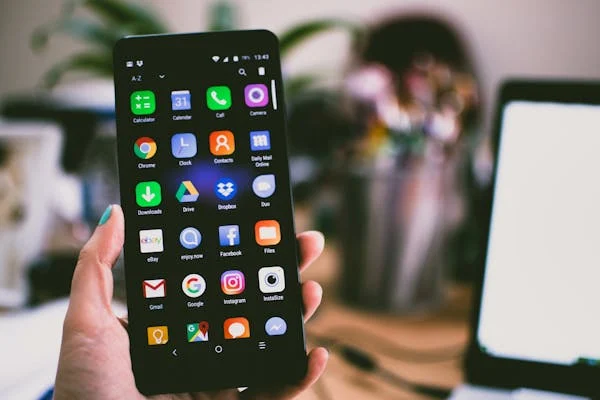The Evolution of Mobile Battery Technology: What’s Next?
In the world of mobile technology, one of the most important aspects of a device is its battery. As smartphones have become more powerful, smarter, and feature-rich, the demand for better, longer-lasting batteries has also grown. Mobile battery technology has evolved significantly over the years, with advancements aimed at increasing energy density, improving charging speed, and extending battery lifespan. But with smartphones now an essential part of daily life, the question arises: what’s next for mobile battery technology?
Let’s take a journey through the evolution of mobile batteries, the current state of the technology, and what the future holds for this crucial component.
1. The Early Days: Nickel-Cadmium and Nickel-Metal Hydride Batteries
The first mobile phones used nickel-cadmium (NiCd) batteries, which were relatively bulky, had limited capacity, and suffered from the “memory effect”—a phenomenon where batteries would lose their maximum charge capacity if they weren’t fully discharged before recharging. These early mobile batteries were not very efficient, and their limited power made it necessary to recharge frequently, especially given the demand for mobile communication on the go.
As technology improved, nickel-metal hydride (NiMH) batteries became the next step in evolution. NiMH batteries offered higher capacity and were less prone to the memory effect, making them a better option for mobile devices. However, they were still fairly bulky and not as efficient as modern batteries.
2. The Rise of Lithium-Ion Batteries
The major breakthrough in mobile battery technology came with the introduction of lithium-ion (Li-ion) batteries. Li-ion batteries are now the standard in smartphones, laptops, and other portable devices, and they marked a major leap in battery efficiency, power density, and size.
Li-ion batteries offer several advantages over older technologies:
- Higher energy density: Li-ion batteries can store more energy in a smaller, lighter package.
- Longer lifespan: Unlike NiCd, Li-ion batteries don’t suffer from the memory effect and generally have a longer lifespan.
- Faster charging: Li-ion batteries can be charged faster, which has become especially important in today’s fast-paced world.
These advantages allowed for the slim and lightweight smartphones we use today, providing a much-needed balance between portability and performance.
3. The Evolution of Charging Technology
While the batteries themselves have gotten better, the charging technology used to replenish them has also evolved significantly. Early mobile phones were charged with bulky chargers that took several hours to fully recharge a battery. Today, rapid charging and wireless charging are changing the way we power our devices.
- Fast Charging: Technologies like Qualcomm’s Quick Charge and USB Power Delivery (USB-PD) have made it possible to charge smartphones to 50% or more in under 30 minutes. Manufacturers like Apple, Samsung, and OnePlus have all integrated fast charging into their devices, allowing users to quickly recharge and get back to using their phones.
- Wireless Charging: Another major advancement has been the development of wireless charging. Initially slow and inefficient, wireless charging is now fast enough to compete with wired charging in some devices. Qi wireless charging is now widely supported across smartphones, enabling users to charge their phones simply by placing them on a charging pad.
These improvements in charging technology have made it easier for users to keep their devices powered up, even in busy, on-the-go environments.
4. The Present: The Push for Longer Battery Life
Today’s smartphones are faster, more capable, and feature more advanced functions than ever before. However, as mobile devices become increasingly powerful, the challenge of maintaining long battery life while keeping the device slim and lightweight remains.
Smartphone manufacturers have tackled this challenge in several ways:
- Larger Batteries: Modern smartphones often come with larger batteries, offering anywhere from 3,000 to 5,000 mAh of capacity. These larger batteries allow phones to last longer without increasing the overall size of the device.
- Battery Optimization: In addition to hardware improvements, software optimization plays a significant role in extending battery life. Manufacturers like Apple and Android developers optimize the operating system to reduce power consumption by limiting background processes and adjusting settings based on usage patterns.
- AI-Powered Battery Management: Some devices now use artificial intelligence (AI) to learn how you use your phone and optimize battery usage accordingly. AI can detect which apps drain the battery the most and suggest ways to reduce energy consumption.
Despite these improvements, users still often find themselves looking for a charge by the end of the day. This has led to the push for even better battery technology.
5. The Future: What’s Next for Mobile Batteries?
The future of mobile battery technology holds exciting possibilities. Here are some of the most promising developments we can expect to see in the coming years:
a. Solid-State Batteries
Solid-state batteries are one of the most anticipated advancements in battery technology. Unlike the liquid electrolytes used in current lithium-ion batteries, solid-state batteries use a solid electrolyte, which provides several advantages:
- Higher energy density: Solid-state batteries can store more energy, potentially offering longer battery life without increasing the size of the device.
- Improved safety: Solid-state batteries are less prone to overheating or catching fire, which makes them a safer option than current lithium-ion technology.
- Faster charging: With solid-state batteries, charging speeds could improve even further, allowing for a quick power-up in minutes instead of hours.
Companies like Toyota, Samsung, and QuantumScape are making strides in developing solid-state batteries, and we may start seeing them in smartphones and electric vehicles in the near future.
b. Graphene Batteries
Graphene, a single layer of carbon atoms arranged in a hexagonal lattice, is a material that has shown great promise in battery technology. Graphene-based batteries could offer:
- Faster charging: Graphene batteries can theoretically charge much faster than lithium-ion batteries.
- Higher capacity: Graphene has a higher conductivity than traditional battery materials, allowing it to store more energy.
- Longer lifespan: Graphene batteries may also have a longer cycle life, meaning they will last longer and degrade less quickly over time.
While graphene batteries are still in the research and development phase, they could be a game-changer for mobile devices in the coming decade.
c. Wireless Charging Revolution
Wireless charging technology is expected to become even more efficient and convenient in the future. Currently, wireless charging requires precise alignment with charging pads, but new advancements may make it possible to charge your phone from a distance. Companies like Energous are working on long-range wireless charging technologies, which could free users from having to place their devices on a charging pad.
Additionally, we could see wireless charging integrated into more everyday objects—such as desks, car seats, or even the floor of your home—making it easier to keep your devices powered up without the need for traditional charging cables.
d. Bio-Powered Batteries
As technology evolves, so does the exploration of unconventional sources of energy. Researchers are investigating bio-powered batteries that could harness energy from natural sources, such as the human body or organic materials. While still in the experimental stages, bio-powered batteries could one day provide a sustainable and eco-friendly alternative to current battery technologies.
6. Conclusion
The evolution of mobile battery technology has been nothing short of remarkable. From the early days of bulky, inefficient batteries to today’s high-capacity lithium-ion batteries and rapid charging technologies, mobile batteries have come a long way. However, the demand for longer battery life and faster charging is unlikely to subside anytime soon, which is why we can expect even more innovation in the years to come.
The future of mobile battery technology is exciting, with promising developments such as solid-state batteries, graphene technology, and wireless charging on the horizon. As these advancements become more widely adopted, we can look forward to smartphones that not only last longer but also charge faster and are safer to use.







